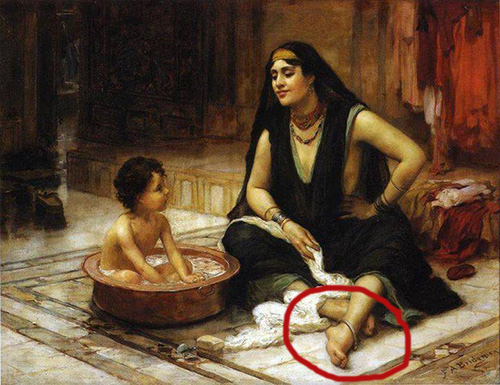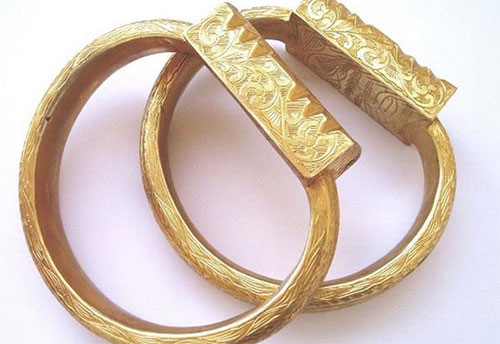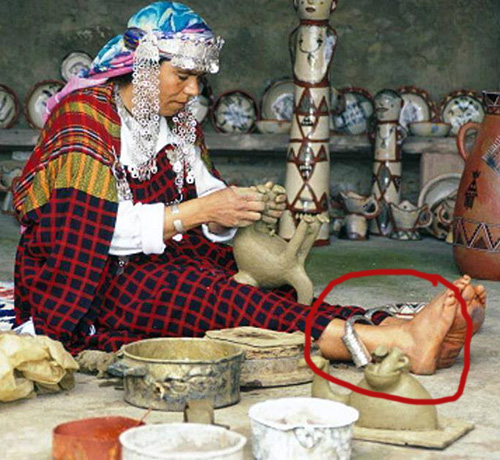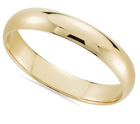 Tunisian grooms traditionally gave their brides-to-be a very beautiful, valuable, and clever wedding present – it was a pair of gold or silver anklets. By this gift, grooms not only showed off their wealth and status but also invented some cunning tricks to find out more about the appearance of their future wife – remember that marriages were often arranged at the time and women covered their body with baggy clothes that hid their body curves, so men had very little chance to know what their bride looked like before the wedding.
Tunisian grooms traditionally gave their brides-to-be a very beautiful, valuable, and clever wedding present – it was a pair of gold or silver anklets. By this gift, grooms not only showed off their wealth and status but also invented some cunning tricks to find out more about the appearance of their future wife – remember that marriages were often arranged at the time and women covered their body with baggy clothes that hid their body curves, so men had very little chance to know what their bride looked like before the wedding.
These costly jewelry items are called “kholkhal” in Tunisia. These are a pair of matching anklets made from gold or silver. The origin of such jewels is Berber or Amazigh, but this tradition was rather popular throughout Tunisia.
Kholkhal anklets have a specific shape – round rigid anklets with a certain block detail. The whole surface is usually covered with carved designs – some are crude and simple, others are very intricate and skillfully performed. In general, kholkhal are stunning jewelry pieces, they look ornate and expensive. And not only look – you can imagine how much this jewelry cost, as it is solid gold or silver (rarer than gold). Thus, kholkhal anklets are really heavy, each weighs about 1 kg.

Such massive and costly jewels had a specific meaning and purpose. They were a part of woman’s dowry, given to her by her fiance. By this present, he showed his future bride and her family that he could provide for her, was rich enough to marry. But also, in Tunisia, women’s jewelry were her own belongings, her property, and no one could take it away from her. A Tunisian woman could survive even if she lost her husband or some other mishap happened – she sold or bartered some of her jewels. This was the equivalent of her personal bank account, and no man was allowed to touch his wife’s jewels without her permission. That’s why Tunisian women had so many gold jewelry items presented to them by parents, husband, in-laws, and other relatives.

But the most curious and unexpected thing about kholkhal anklets is that grooms used this jewelry to find out more about their fiancee’s body shape. As you know, grooms never met their brides up close or intimately in the past, their parents often arranged the marriage and the couple just faced the fact that they would marry soon. Most grooms knew very little about the future bride. So, they needed some tricks to learn at least the basic info, like whether their wife would be slender and lean or plump and curvy. And that’s where kholkhal got handy. Grooms listened for the sound the anklets made when the girl was walking. If her legs and ankles were thin, the bracelets sat loosely and jingled; if she had fuller ankles, she walked with a so-called “mute kholkhal”. Of course, this was not much, but what other choice did Tunisian men have?!

The bride wore her new kholkhal anklets during all 7 days of her wedding. And after the marriage, she could use this jewelry whenever she wanted – every day or just for special occasions.
In modern times, Tunisian women also wear kholkhal anklets but they’ve lost their meaningful purposes and became just artful jewels. Though, elderly people still remember why kholkhal are so important for their culture.

